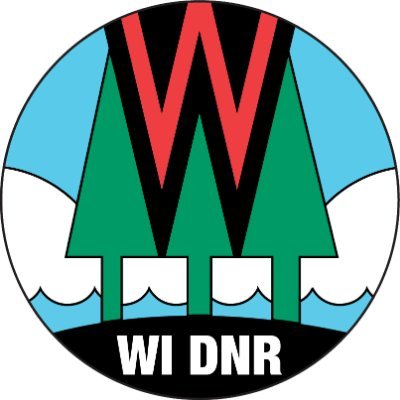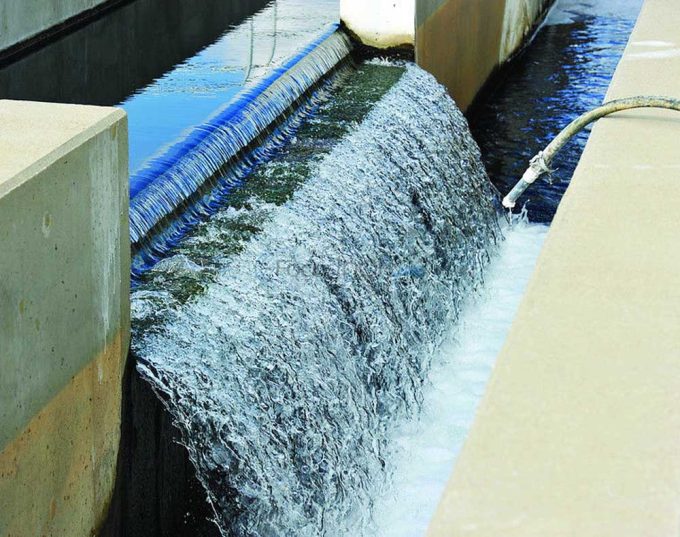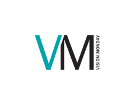Report on Wisconsin’s State Revolving Fund and its Contribution to Sustainable Development Goals
This report details the function and impact of the Wisconsin Department of Natural Resources (DNR) State Revolving Fund (SRF) programs. It analyzes how these financial mechanisms directly support the achievement of United Nations Sustainable Development Goals (SDGs), with a primary focus on SDG 6 (Clean Water and Sanitation), SDG 3 (Good Health and Well-being), and SDG 11 (Sustainable Cities and Communities).
Program Overview and Objectives
State Revolving Fund (SRF) Mandate
The SRF provides essential financial assistance to municipalities throughout Wisconsin for critical infrastructure projects. The fund’s mandate is to enable communities to meet and maintain wastewater and drinking water standards, thereby protecting public health and enhancing water quality. Since its inception in 1991, the SRF has allocated over $7.3 billion for more than 2,000 projects.
Alignment with Sustainable Development Goals
The SRF’s core mission is fundamentally aligned with several key SDGs. The programs serve as a primary state-level instrument for achieving the following goals:
- SDG 6: Clean Water and Sanitation: By financing infrastructure for drinking water, wastewater, and stormwater management, the SRF directly addresses targets for universal access to safe water (Target 6.1) and improved sanitation and water quality (Target 6.3).
- SDG 3: Good Health and Well-being: The projects funded prevent waterborne diseases and reduce public exposure to hazardous contaminants like lead and PFAS, contributing to Target 3.9, which aims to reduce illnesses from water pollution.
- SDG 11: Sustainable Cities and Communities: The fund helps build resilient and safe water infrastructure, a cornerstone of sustainable urban and rural development (Target 11.5).
Financial Structure and Administration
Funding Sources
The SRF is a sustainable financial model built on a multi-level partnership, reflecting the principles of SDG 17 (Partnerships for the Goals). Its funding is derived from several sources:
- Federal capitalization grants from the U.S. Environmental Protection Agency (EPA).
- State of Wisconsin matching funds.
- Repayments from previous loans, which are recycled to fund new projects.
- Significant supplemental funding from the federal Bipartisan Infrastructure Law.
Administrative Partnership
The SRF is jointly administered by the DNR’s Bureau of Community Financial Assistance and the Department of Administration’s Capital Finance Office, ensuring effective governance and financial oversight.
Program Components and SDG Impact
Safe Drinking Water Loan Program
This program provides subsidized loans for public drinking water infrastructure projects. It is a direct contributor to achieving SDG 6 (Target 6.1: Safe and affordable drinking water) and SDG 3 (Target 3.9: Reduce illness from hazardous chemicals).
- Case Study: South Milwaukee: The program is funding the removal of over 2,700 public and private lead service lines, a critical public health initiative to eliminate a major source of contamination and protect community well-being.
- Case Study: West Bend: Funding was provided for a PFAS well water treatment project, demonstrating a proactive approach to addressing emerging contaminants and ensuring water safety.
Clean Water Fund Program
This program offers subsidized loans for publicly owned wastewater treatment and collection systems. It directly supports SDG 6 (Target 6.3: Improve water quality by reducing pollution) and SDG 11 (Target 11.6: Reduce the environmental impact of cities).
- Case Study: Burnett Sanitary District (Dodge County): The fund enabled the district to address a failing lagoon system that posed a risk of phosphorus and E. coli contamination. By connecting to the City of Beaver Dam’s wastewater treatment plant, the project provided a long-term, sustainable solution that protects local water quality. This project was co-funded by USDA Rural Development, further highlighting a commitment to SDG 17 (Partnerships).
Current Status and Future Outlook
Increased Demand and Funding
Demand for SRF assistance has increased significantly, largely due to the availability of enhanced funding and principal forgiveness through the Bipartisan Infrastructure Law. This federal investment has expanded the DNR’s capacity to fund projects vital for achieving SDG targets. High demand is projected to continue through 2027.
State-Level Commitment
The 2025-27 Wisconsin state budget, signed by Governor Tony Evers, reinforces this commitment by increasing borrowing authority for the SRF by $731.6 million. This action ensures the state can secure federal matching grants and continue to meet the high demand from local communities for the next four years.
Identified Sustainable Development Goals (SDGs)
Explanation of Connection
The article discusses Wisconsin’s State Revolving Fund programs, which provide financial assistance to municipalities for drinking water, wastewater, and stormwater infrastructure projects. These initiatives are directly linked to several SDGs by focusing on improving public health, ensuring access to clean water and sanitation, building resilient infrastructure, and fostering partnerships to achieve these goals. The core mission of the programs—to protect water quality and public health—aligns with the fundamental principles of sustainable development.
- SDG 6: Clean Water and Sanitation: This is the most prominent SDG addressed. The article details the Clean Water Fund and Safe Drinking Water Loan programs, which are designed to ensure the availability and sustainable management of water and sanitation for all by funding wastewater treatment, safe drinking water infrastructure, and stormwater management.
- SDG 3: Good Health and Well-being: The article explicitly states that the projects “protect and improve public health.” By funding the replacement of lead service lines, addressing PFAS contaminants, and preventing E. coli risks from faulty wastewater systems, the programs directly contribute to reducing illnesses and deaths from water pollution and contamination.
- SDG 9: Industry, Innovation and Infrastructure: The focus on funding “infrastructure projects” for water and wastewater systems directly relates to building resilient infrastructure. The State Revolving Fund is a financial mechanism that supports the development and upgrading of quality, reliable, and sustainable community infrastructure.
- SDG 11: Sustainable Cities and Communities: The programs provide financial assistance to “municipalities” and “communities,” helping them provide essential services like safe drinking water and sanitation. This supports the goal of making cities and human settlements inclusive, safe, resilient, and sustainable.
- SDG 17: Partnerships for the Goals: The article highlights the collaborative nature of the State Revolving Fund, which combines federal grants from the EPA with state funding. It is jointly administered by the DNR and the Department of Administration, and one project was co-funded by USDA Rural Development, demonstrating a multi-level government partnership to achieve common goals.
Specific SDG Targets
Explanation of Identification
The article provides specific examples and details about the funded projects that align directly with several SDG targets. These targets are not just broadly related but are actively being addressed by the actions described, such as ensuring safe drinking water, improving water quality by treating wastewater, and providing financial resources for infrastructure.
- Target 6.1: By 2030, achieve universal and equitable access to safe and affordable drinking water for all. The Safe Drinking Water Loan Program directly supports this by funding projects to replace “over 2,700 public and private lead service lines” and address “emerging contaminants such as per- and poly-fluoroalkyl substances (PFAS),” making water safer for residents.
- Target 6.3: By 2030, improve water quality by reducing pollution… and substantially increasing recycling and safe reuse globally. The Clean Water Fund Program addresses this by helping municipalities comply with pollution discharge permits and fixing aging systems that leak and are “unable to meet phosphorus limits, creating a risk for E. coli in nearby drinking water sources.”
- Target 3.9: By 2030, substantially reduce the number of deaths and illnesses from hazardous chemicals and air, water and soil pollution and contamination. The efforts to remove lead, a neurotoxin, and treat PFAS, which are hazardous chemicals, from drinking water are direct actions to prevent illnesses caused by water contamination.
- Target 9.1: Develop quality, reliable, sustainable and resilient infrastructure… to support economic development and human well-being. The article is centered on providing over $7.3 billion in financial assistance for the construction and maintenance of essential water and wastewater infrastructure across Wisconsin.
- Target 11.1: By 2030, ensure access for all to adequate, safe and affordable housing and basic services… The provision of safe drinking water and effective wastewater treatment are fundamental “basic services” that these programs help municipalities provide to their residents.
Mentioned or Implied Indicators
Explanation of Measurement
While the article does not use the official UN indicator codes, it contains quantitative and qualitative data that can be used as indicators to measure progress toward the identified targets. These include financial figures, project counts, and specific outcomes of the funded initiatives, which serve as direct evidence of the programs’ impact.
- Amount of financial assistance provided for water infrastructure: The article states that “over $7.3 billion in financial assistance” has been provided since 1991, and the state budget increases borrowing by “$731.6 million.” This measures the financial commitment to water and sanitation infrastructure (relevant to Targets 6.a and 9.1).
- Number of water and sanitation projects funded: The text mentions that the programs have funded “over 2,000 projects,” indicating the scale and reach of the infrastructure development efforts (relevant to Target 9.1).
- Number of lead service lines replaced: The specific example of South Milwaukee removing “over 2,700 public and private lead service lines” is a direct indicator of progress in providing safer drinking water (relevant to Targets 6.1 and 3.9).
- Number of communities addressing emerging contaminants: The mention of a “PFAS well water treatment project in West Bend” serves as an indicator of action being taken to manage hazardous chemicals in drinking water (relevant to Targets 6.1 and 3.9).
- Proportion of wastewater safely treated: The Burnett Sanitary District project, which addressed a leaking lagoon system to meet phosphorus limits and connect to a modern treatment plant, is an example that can be used to measure improvements in wastewater treatment (relevant to Target 6.3).
SDGs, Targets, and Indicators Analysis
| SDGs | Targets | Indicators |
|---|---|---|
| SDG 6: Clean Water and Sanitation | 6.1: Achieve universal and equitable access to safe and affordable drinking water.
6.3: Improve water quality by reducing pollution and treating wastewater. |
|
| SDG 3: Good Health and Well-being | 3.9: Substantially reduce illnesses from hazardous chemicals and water pollution. |
|
| SDG 9: Industry, Innovation and Infrastructure | 9.1: Develop quality, reliable, sustainable and resilient infrastructure. |
|
| SDG 11: Sustainable Cities and Communities | 11.1: Ensure access for all to adequate, safe and affordable basic services. |
|
| SDG 17: Partnerships for the Goals | 17.17: Encourage and promote effective public partnerships. |
|
Source: urbanmilwaukee.com







